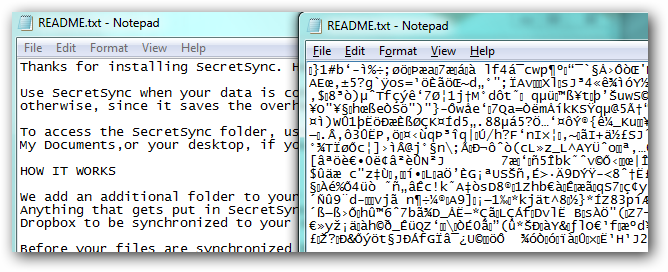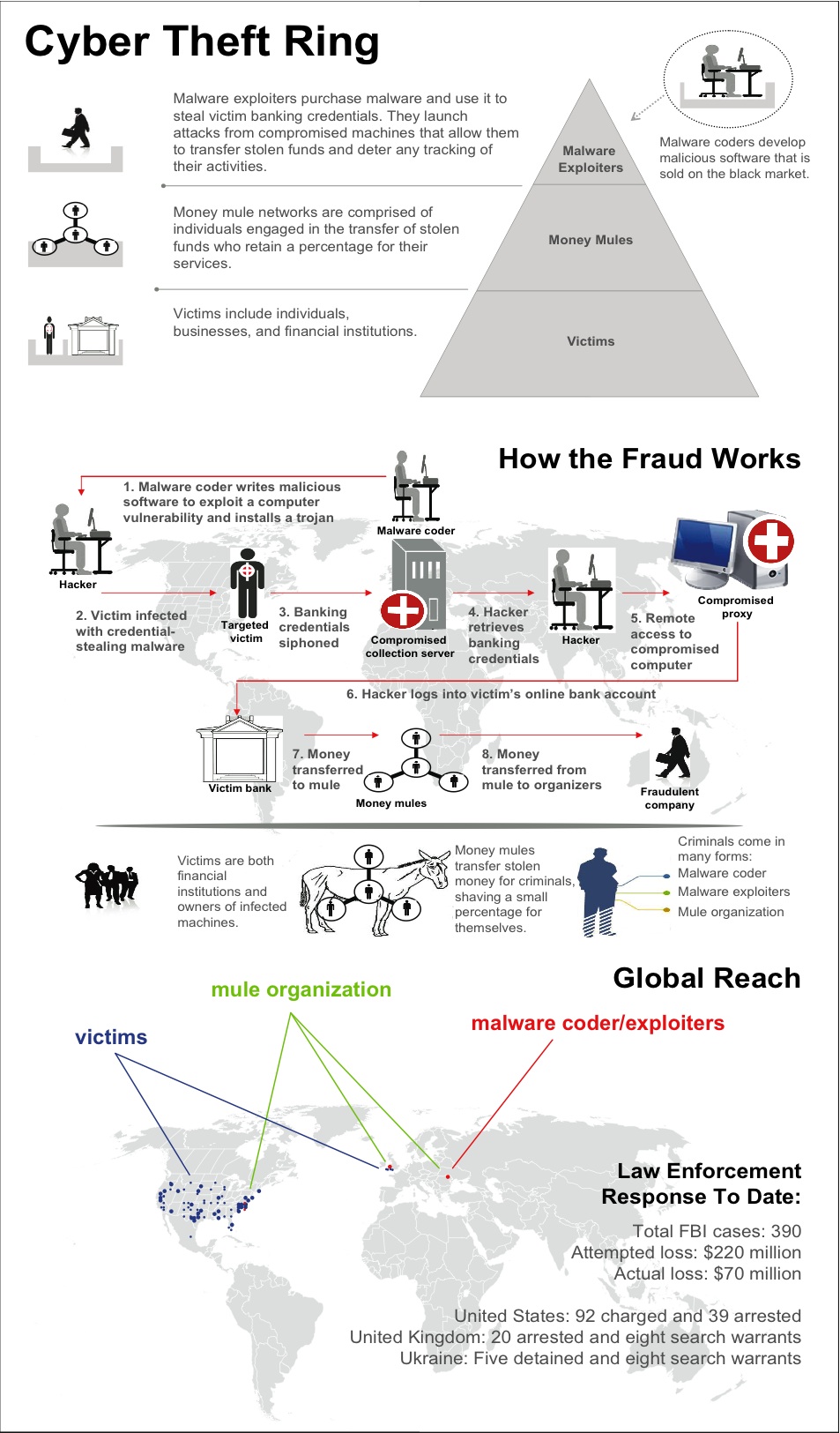|
Necurs Botnet
The Necurs botnet is a distributor of many pieces of malware, most notably Locky. Reports Around June 1, 2016, the botnet went offline, perhaps due to a glitch in the command and control server running Necurs. However, three weeks later, Jon French from AppRiver discovered a spike in spam emails, signifying either a temporary spike in the botnet's activity or return to its normal pre-June 1 state. In a 2020 report, it was noted to have particularly targeted India, Southeast Asia, Turkey and Mexico. Distributed malware * Bart * Dridex * Locky * RockLoader * Globeimposter See also * Conficker * Command and control (malware) * Gameover ZeuS * Operation Tovar * Timeline of computer viruses and worms * Tiny Banker Trojan * Torpig * Zeus (malware) * Zombie (computer science) In computing, a zombie is a computer connected to the Internet that has been compromised by a hacker via a computer virus, computer worm, or trojan horse program and can be used to perform malicious ta ... [...More Info...] [...Related Items...] OR: [Wikipedia] [Google] [Baidu] |
Locky
Locky is ransomware malware released in 2016. It is delivered by email (that is allegedly an invoice requiring payment) with an attached Microsoft Word document that contains malicious macros. When the user opens the document, it appears to be full of gibberish, and includes the phrase "Enable macro if data encoding is incorrect," a social engineering technique. If the user does enable macros, they save and run a binary file that downloads the ''actual'' encryption Trojan, which will encrypt all files that match particular extensions. Filenames are converted to a unique 16 letter and number combination. Initially, only the .locky file extension was used for these encrypted files. Subsequently, other file extensions have been used, including .zepto, .odin, .aesir, .thor, and .zzzzz. After encryption, a message (displayed on the user's desktop) instructs them to download the Tor browser and visit a specific criminal-operated Web site for further information. The website contains i ... [...More Info...] [...Related Items...] OR: [Wikipedia] [Google] [Baidu] |
Gameover ZeuS
GameOverZeus is a peer-to-peer botnet based on components from the earlier ZeuS trojan. The malware was created by Russian hacker Evgeniy Mikhailovich Bogachev. It is believed to have been spread through use of the Cutwail botnet. Unlike its predecessor the ZeuS trojan, Gameover ZeuS uses an encrypted peer-to-peer communication system to communicate between its nodes and its command and control servers, greatly reducing its vulnerability to law enforcement operations. The algorithm used appears to be modeled on the Kademlia P2P protocol. Scammers control and monitor Gameover ZeuS via command and control (C&C) servers. The virus establishes the connection to the server as soon as its malicious executable installs on the computer, at which point it can disable certain system processes, download and launch executables, or delete essential system files, making the system unusable. According to a report by Symantec, Gameover ZeuS has largely been used for banking fraud and distri ... [...More Info...] [...Related Items...] OR: [Wikipedia] [Google] [Baidu] |
Zombie (computer Science)
In computing, a zombie is a computer connected to the Internet that has been compromised by a hacker via a computer virus, computer worm, or trojan horse program and can be used to perform malicious tasks under the remote direction of the hacker. Zombie computers often coordinate together in a botnet controlled by the hacker, and are used for activities such as spreading e-mail spam and launching distributed denial-of-service attacks (DDoS attacks) against web servers. Most victims are unaware that their computers have become zombies. The concept is similar to the zombie of Haitian Voodoo folklore, which refers to a corpse resurrected by a sorcerer via magic and enslaved to the sorcerer's commands, having no free will of its own. A coordinated DDoS attack by multiple botnet machines also resembles a "zombie horde attack", as depicted in fictional zombie films. Advertising Zombie computers have been used extensively to send e-mail spam; as of 2005, an estimated 50–80 ... [...More Info...] [...Related Items...] OR: [Wikipedia] [Google] [Baidu] |
Zeus (malware)
Zeus, ZeuS, or Zbot is a Trojan horse malware package that runs on versions of Microsoft Windows. While it can be used to carry out many malicious and criminal tasks, it is often used to steal banking information by man-in-the-browser keystroke logging and form grabbing. It is also used to install the CryptoLocker ransomware. Zeus is spread mainly through drive-by downloads and phishing schemes. First identified in July 2007 when it was used to steal information from the United States Department of Transportation, it became more widespread in March 2009. In June 2009 security company Prevx discovered that Zeus had compromised over 74,000 FTP accounts on websites of such companies as the Bank of America, NASA, Monster.com, ABC, Oracle, Play.com, Cisco, Amazon, and ''BusinessWeek''. Similarly to Koobface, Zeus has also been used to trick victims of technical support scams into giving the scam artists money through pop-up messages that claim the user has a virus, when in realit ... [...More Info...] [...Related Items...] OR: [Wikipedia] [Google] [Baidu] |
Torpig
Torpig, also known as Anserin or Sinowal is a type of botnet spread through systems compromised by the Mebroot rootkit by a variety of trojan horses for the purpose of collecting sensitive personal and corporate data such as bank account and credit card information. It targets computers that use Microsoft Windows, recruiting a network of zombies for the botnet. Torpig circumvents antivirus software through the use of rootkit technology and scans the infected system for credentials, accounts and passwords as well as potentially allowing attackers full access to the computer. It is also purportedly capable of modifying data on the computer, and can perform man-in-the-browser attacks. By November 2008, it was estimated that Torpig had stolen the details of about 500,000 online bank accounts and credit and debit cards and was described as "one of the most advanced pieces of crimeware ever created". History Torpig reportedly began development in 2005, evolving from that point to more ... [...More Info...] [...Related Items...] OR: [Wikipedia] [Google] [Baidu] |
Tiny Banker Trojan
Tiny Banker Trojan, also called Tinba, is a malware program that targets financial institution websites. It is a modified form of an older form of viruses known as Banker Trojans, yet it is much smaller in size and more powerful. It works by establishing man-in-the-browser attacks and network sniffing. Since its discovery, it has been found to have infected more than two dozen major banking institutions in the United States, including TD Bank, Chase, HSBC, Wells Fargo, PNC, and Bank of America. It is designed to steal users' sensitive data, such as account login information and banking codes. History Tiny Banker was first discovered in 2012 when it was found to have infected thousands of computers in Turkey. After it was discovered, the original source code for the malware was leaked online and began undergoing individual revisions, making the process of detecting it harder for the institutions. It is a highly modified version of the Zeus Trojan, which had a very similar attack ... [...More Info...] [...Related Items...] OR: [Wikipedia] [Google] [Baidu] |
Timeline Of Computer Viruses And Worms
A timeline is a display of a list of events in chronological order. It is typically a graphic design showing a long bar labelled with dates paralleling it, and usually contemporaneous events. Timelines can use any suitable scale representing time, suiting the subject and data; many use a linear scale, in which a unit of distance is equal to a set amount of time. This timescale is dependent on the events in the timeline. A timeline of evolution can be over millions of years, whereas a timeline for the day of the September 11 attacks can take place over minutes, and that of an explosion over milliseconds. While many timelines use a linear timescale—especially where very large or small timespans are relevant -- logarithmic timelines entail a logarithmic scale of time; some "hurry up and wait" chronologies are depicted with zoom lens metaphors. History Time and space, particularly the line, are intertwined concepts in human thought. The line is ubiquitous in clocks in the f ... [...More Info...] [...Related Items...] OR: [Wikipedia] [Google] [Baidu] |
Operation Tovar
Operation Tovar is an international collaborative operation carried out by law enforcement agencies from multiple countries against the Gameover ZeuS botnet, which is believed by the investigators to have been used in bank fraud and the distribution of the CryptoLocker ransomware. Participants include the U.S. Department of Justice, Europol, the FBI and the U.K. National Crime Agency, South African Police Service, together with a number of security companies and academic researchers, including Dell SecureWorks, Deloitte Cyber Risk Services, Microsoft Corporation, Abuse.ch, Afilias, F-Secure, Level 3 Communications, McAfee, Neustar, Shadowserver, Anubisnetworks, Symantec, Heimdal Security, Sophos and Trend Micro, and academic researchers from Carnegie Mellon University, the Georgia Institute of Technology, VU University Amsterdam and Saarland University. Other law enforcement organizations involved include the Australian Federal Police; the National Police of the Neth ... [...More Info...] [...Related Items...] OR: [Wikipedia] [Google] [Baidu] |
Conficker
Conficker, also known as Downup, Downadup and Kido, is a computer worm targeting the Microsoft Windows operating system that was first detected in November 2008. It uses flaws in Windows OS software and dictionary attacks on administrator passwords to propagate while forming a botnet, and has been unusually difficult to counter because of its combined use of many advanced malware techniques. The Conficker worm infected millions of computers including government, business and home computers in over 190 countries, making it the largest known computer worm infection since the 2003 Welchia. Despite its wide propagation, the worm did not do much damage, perhaps because its authors – believed to have been Ukrainian citizens – did not dare use it because of the attention it drew. Four men were arrested, and one pled guilty and was sentenced to four years in prison. Prevalence Estimates of the number of infected computers were difficult because the virus changed its propagation a ... [...More Info...] [...Related Items...] OR: [Wikipedia] [Google] [Baidu] |
Botnet
A botnet is a group of Internet-connected devices, each of which runs one or more bots. Botnets can be used to perform Distributed Denial-of-Service (DDoS) attacks, steal data, send spam, and allow the attacker to access the device and its connection. The owner can control the botnet using command and control (C&C) software. The word "botnet" is a portmanteau of the words "robot" and "network". The term is usually used with a negative or malicious connotation. Overview A botnet is a logical collection of Internet-connected devices, such as computers, smartphones or Internet of things (IoT) devices whose security have been breached and control ceded to a third party. Each compromised device, known as a "bot," is created when a device is penetrated by software from a '' malware'' (malicious software) distribution. The controller of a botnet is able to direct the activities of these compromised computers through communication channels formed by standards-based network protocols, su ... [...More Info...] [...Related Items...] OR: [Wikipedia] [Google] [Baidu] |


